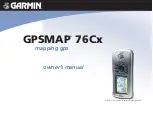
LA010812A © 2007 Navman Wireless. All rights reserved. Proprietary information and specifications subject to change without notice.
1.0 Introduction
This application document describes the most significant differences between Navman Jupiter
31 GPS module and the Jupiter 21 GPS module.
This document is an aid for migrating from Jupiter 21 to Jupiter 31. While every effort has been
made to identify differences, it is incumbent on all customers to qualify the Jupiter 31 in each
application.
2.0 Technical description
Jupiter 21 and 21S are based on SiRF GSC2e LP GPS core architecture. Jupiter 31 is based
on SiRF GSC3 LP core architecture. J31 consists of a carrier board and a Jupiter 30 module
mounted with associated connectors and power circuitry for maximum backward compatibility
with Jupiter 21 series products.
3.0 Product applications
Jupiter 21:
TU21-D450-021
TU21-D450-031
TU21-D450-041
TU21-D550-021
TU21-D550-031
TU21-D550-041
Jupiter 31:
AA003041-G
AA003042-G
AA003043-G
4.0 Hardware comparison
Feature
Jupiter 21
Jupiter 31
Performance differences
receiver.design
SiRFStarIIe/LP
chipset
SiRFStarIII
GSC3e/LP chipset
1) J31 has faster TTFF
2) J31 has lower power
consumption
3) J31 has greater receiver
sensitivity
Table 4-1: Hardware comparison
4.1 Primary power
Parameter
J21
J21S
J31
Input voltage
3.1 to 5.5 VDC
3.1 to 5.5 VDC
3.3 VDC
- 0.1/ + 0.3 VDC*
Current at full power (typical)
75.mA
85.mA
<41.mA
Current ( max)
100.mA
110.mA
<.45.mA
Battery backup voltage
2.5 to 5.5 VDC
2.5 to 5.5 VDC
1.9 to 3.6 VDC **
Battery backup current
10.µA
10.µA
5.to.6.µA
Ripple
50.mV.pp
50.mV.pp
50.mV.pp
Low voltage detector system reset
<.2.85.V
<.2.85.V
< 3.0 V
*5VDC input requires addition of a regulator to existing board layout; ** battery backup voltage must not fall below
1.4.v
Table 4-2: Primary power comparison
Downloaded from
Downloaded from
Downloaded from
Downloaded from
Downloaded from
































